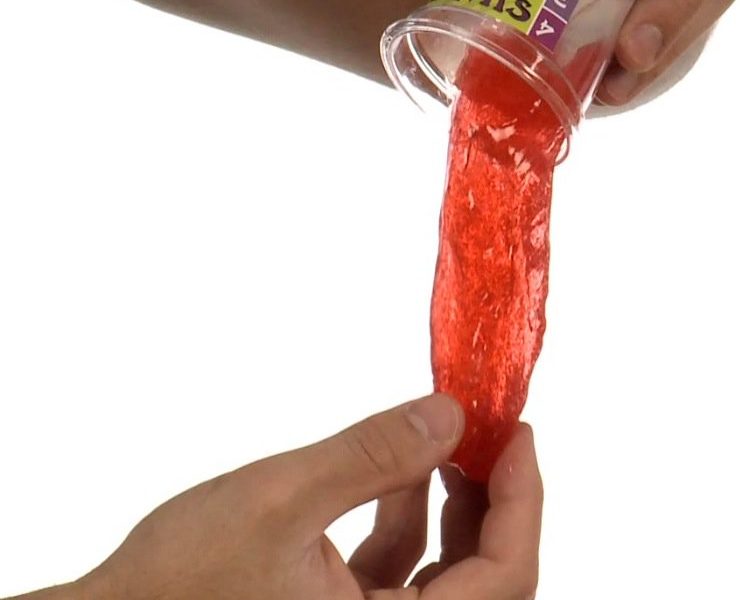How to Make Slime - Elmer's Glue Recipes
Expert slime makers agree that Elmer’s glue makes the best DIY slime. However, there are some tricky variations that can turn your slime from just […]

Making slime is super easy if you know the secret recipe. Too much or too little of either solution and you’ll get something that looks like clumpy water – not slime. Don’t worry… you’ll make a perfect batch of slime the very first time using the Shaker Slime cups.
Most liquids, such as water, are made up of small, unconnected molecules bouncing around and tumbling over and into one another. These single, unconnected molecules are called monomers. Monomer liquids flow easily and are seldom gooey or sticky to the touch. In other substances, the monomers are linked together in long chains of molecules known as polymers. These long chains don’t flow easily at all. Like a bowl of cooked spaghetti, they sort of roll over and around one another. Liquid polymers tend to be a lot gooier and flow more slowly than liquid monomers. The Atomic Goo solution called polyvinyl alcohol (PVA) you used to make slime is a liquid polymer.
PVA is used by the plastics industry to form surface coatings and to make surface films resistant to gasoline. It’s also used to make artificial sponges, hoses, and printing inks. If you check out the ingredients of contact lens wetting solutions, you may find PVA used as a lubricant and a cleanser. The PVA solution in this kit contains coloring and a special disinfectant to help resist pesky germs on those not-so-clean hands.
The borax solution is called sodium tetraborate. Your parents or grandparents will recognize the name Borax as a unique brand of powdered soap used to whiten linen and to really clean your hands. The Borax or sodium tetraborate molecules act to “cross-link” the long strands of PVA molecules. Just imagine a box full of tiny, steel chains that slip and slide easily across one another. Each chain is made up of hundreds of individual links but one chain is not connected to another chain. Borax loves to connect with water and billions of Borax molecules randomly link trillions of water molecules found anywhere on the chains of PVA. Now when you pull out one PVA chain, all the rest comes with it in a blob.